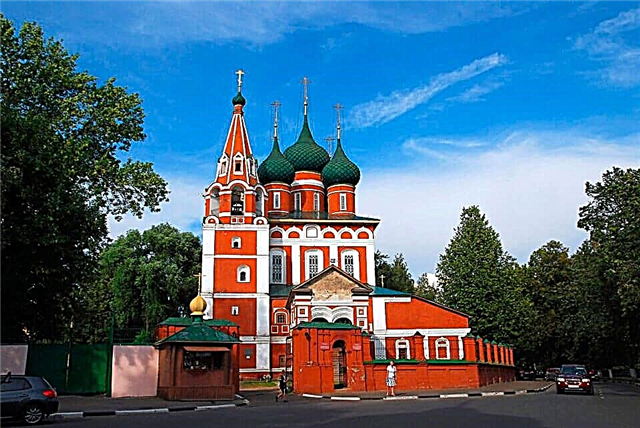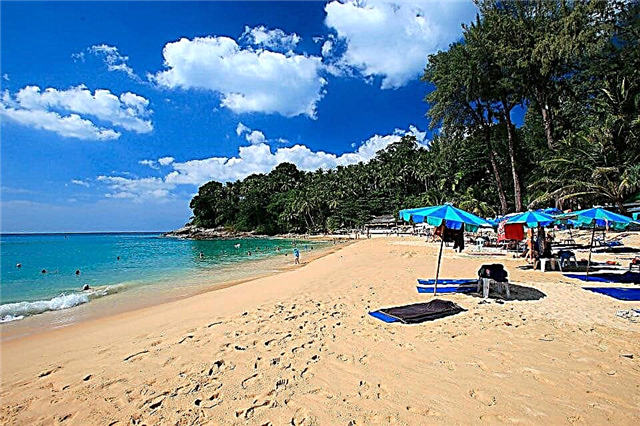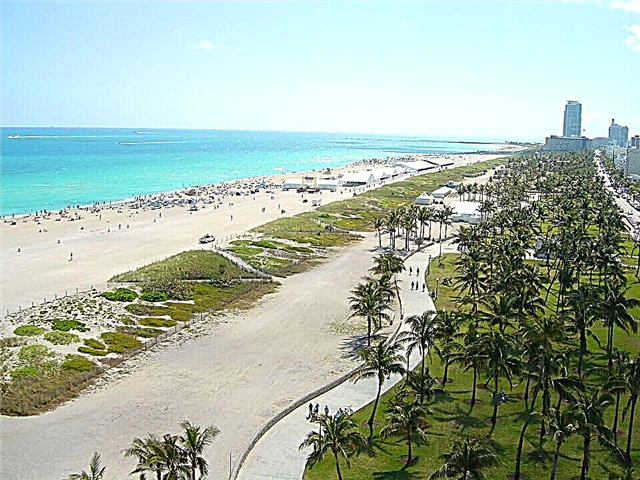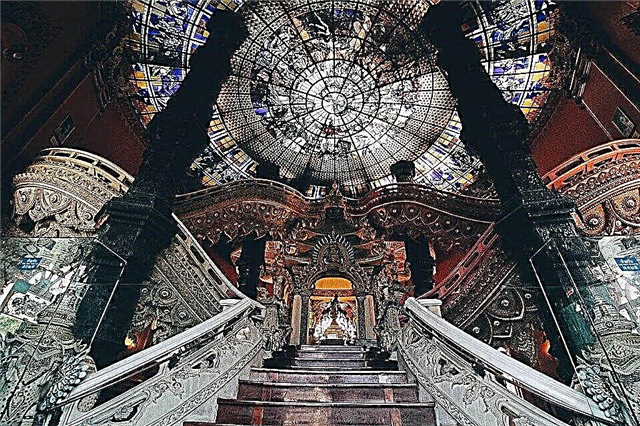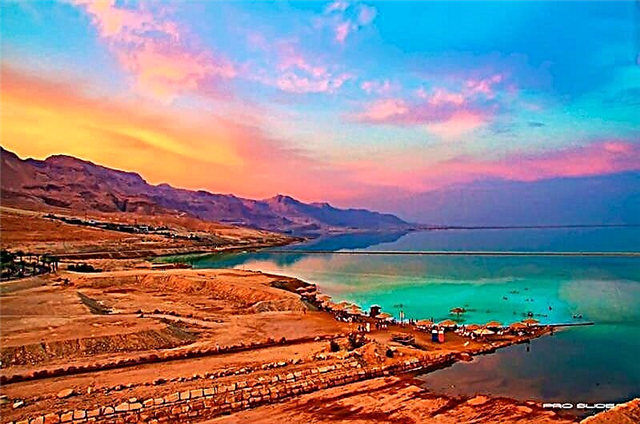During the rise of the mighty British Empire, London became practically the center of the world. The fabulous capital and resources flowing into the metropolis from numerous overseas colonies have made the UK capital a wealthy, arrogant and glittering city, filled with architectural masterpieces, magnificent concert halls and fashionable shops.
London is a coveted destination not only for countless flows of immigrants, but also for tourists from all over the world. Lush Victorian city quarters, Buckingham Palace, The Tower and Westminster Abbey are among the world's most visited landmarks. Michelin-starred restaurants and trendy clubs in London's Soho area attract the most advanced, progressive, select public.

The best hotels and hotels at affordable prices.
from 500 rubles / day
What to see and where to go in London?
The most interesting and beautiful places for walking. Photos and a short description.
Tower Bridge
Drawbridge over the River Thames, designed by architect H. Jones and built at the end of the 19th century. The structure consists of two powerful "Gothic" towers 64 meters high, connected by galleries and hanging spans. Tower Bridge is one of the most recognizable symbols of the British capital, although initially Londoners considered it ugly and ridiculous. There is a museum on the top floor of one of the galleries.

Tower of London
The fortress on the north bank of the Thames is over 900 years old. The Tower is known as a prison for noble people and prisoners of royal blood. From time to time it became the residence of the monarchs. At different times, the famous humanist Thomas More, the wives of Henry VIII Catherine Howard and Anne Boleyn, the "bloody" Queen Mary Tudor and many others have been prisoners of the castle. Only in the middle of the 20th century did the Tower cease to function as a prison.

London Eye Ferris Wheel
One of the largest attractions of this type in Europe. The height of the structure is 136 m, which approximately corresponds to a 45-storey building. The wheel is installed on the banks of the Thames, overlooking the whole of London. Passengers can be accommodated in one of 32 closed capsule cabins that symbolize 32 urban areas. A complete revolution is completed in half an hour. The attraction was opened in 1999.

Buckingham Palace
Royal Palace, the official residence of the ruling dynasty in London. The building has about 800 rooms, around a perimeter of 20 hectares there is a whole "city" for the internal use of royalty: a hospital, a police station, a post office, a restaurant. The palace was built for the Duke of Buckingham in the 18th century, but was bought by King George III. It became an official residence after the accession to the throne of Queen Victoria.

Palace of Westminster and Big Ben
The seat of the British Parliament since the 16th century. The palace stands on the banks of the Thames in the heart of the capital. Since the 11th century, English kings have settled here. For many centuries, the facade of the building was rebuilt, updated, new buildings were added. Tourists can only get inside during the summer parliamentary break. Big Ben is the bell of the famous clock tower on the territory of the Palace of Westminster, more often this is the name of the entire tower together with the famous clock face. The tower was built by the architect O. Pujin in 1859; the building is 96 meters high. Since 2012, Big Ben has been officially renamed Elizabeth Tower in honor of the reigning queen.

Kensington palace
Another royal residence, the smallest of all the palaces belonging to the ruling family. The building was built in the 17th century. for the Earl of Nottingham, but King William of Orange bought it and made it his summer country estate. Kensington Palace (rather a mansion compared to other royal palaces) is located in one of the western districts of London. In our time, the families of the Duke of Kent and Gloucester live there.

Westminster Abbey
The main church in Great Britain, not only an important religious center, but also the place of coronation and burial of British monarchs. The abbey was founded by Edward the Confessor at the beginning of the 11th century, and acquired its modern appearance in the 15th century. Since Harold II, all kings of Great Britain have been crowned here. The abbey is open to tourists and often hosts classical music concerts and exhibitions.

St Paul's Cathedral
Anglican Church, standing on Ludgate Hill. From the early Middle Ages, Christian churches were built in this place. The last Catholic cathedral fell into disrepair after the reforms of Henry VIII, only ruins remained on the top of the hill. In the XVII century. construction began on a completely new cathedral designed by Sir Christopher Wren. Many iconic personalities of British history are buried in the temple: W. Churchill, Admiral Nelson, A. Fleming and others.

Trafalgar Square
The famous square in central London, the beloved symbol of the city and the home of the British Kilometer Zero. Numerous holidays and festivals are held here; in winter, the country's main Christmas tree is established. The square appeared in 1820 on the site of the old Whitehall stables. The place is named in honor of the victory of the British in 1805 in the naval battle at Cape Trafalgar.

Oxford street
One of London's most famous shopping streets. More than 100 million people visit it annually. First of all, visiting the street is interesting for everyone who follows fashion and loves shopping. In a relatively small space (Oxford Street is only 2.4 km long), there are more than 500 stores, including boutiques of world brands, large family supermarkets and mass-market stores.

Piccadilly Street and Square
The street got its name from the lace collars that Robert Baker sold. It was previously called Portuguese. Piccadilly Circus is known for the fact that for more than 300 years the richest and most distinguished representatives of the world "elite" have settled here: bankers, stars, members of powerful financial clans. The most expensive and luxurious mansions, hotels and apartments are located here.

Abbey Road
The street gained popularity due to the fact that part of it was immortalized on the cover of the album "The Beatles" (the album was called - "Abbey Road"). There was also a record company where the famous group recorded their songs. Several decades later, fans continue their pilgrimage to Abbey Road. The Beatles are aspirated and photographed in the "same place" that is depicted on the cover.

Skyscraper Mary Ax 30
A building of metal and glass structures in modern central London, shaped like a cucumber (Barcelona also has such a tower). The building is used as the headquarters of the Swiss company Swiss Reinsurance. The tower was built from 2001 to 2004. designed by the architect Sir N. Foster. $ 400 million was spent on the construction. The structure is 180 meters high and contains 40 floors.

Skyscraper Shard
A high-rise building built for the opening of the 2012 Olympic Games. The structure is a glass pyramid that resembles a block of ice 310 meters high (72 floors). Inside are offices, hotels, recreation areas, private apartments. Tourists tend to get into the skyscraper to the observation deck, located at the 70th floor, from where you can admire London at a glance.

British museum
The main historical and archaeological museum of the country, one of the largest in the world.There are about 100 exhibition halls in the building, where exhibits from all over the world - the former colonies of the British Empire are presented. There are also ancient Egyptian and antique artifacts. Many countries demand to return the exhibits to their homeland, as it is believed that they got to the British Museum in a not entirely honest way.

London National Gallery
The largest museum in the country, where more than 2,000 samples of Western European painting are exhibited, dating back to the 12th century. The gallery was created in 1839, since then the collection has been constantly replenished. Like many similar places, the museum cannot be bypassed in one visit; you will need to return to it several times to look at all the expositions. Also in the London Gallery you can listen to audiobooks and lectures on art.

Churchill War Rooms Museum
An underground bunker from which Churchill and his entourage ran a military company during World War II. Its construction was completed shortly before the start of the war. In 1989, Margaret Thatcher inaugurated the bunker for everyone to see. Equipment, personal belongings of the leaders of the country, photos and documents were left inside as exhibits. The museum is located under the Treasury building, next to Westminster Palace, and is a branch of the Imperial War Museum.

Victoria and Albert Museum
The world's largest museum of design and arts and crafts. It was opened a year after the World's Fair of 1851, as the event was very successful. The Museum of Products, as the collection was originally called, was renamed in 1899 in honor of Queen Victoria and her husband Albert. The royal couple provided comprehensive assistance in replenishing the collection, consisting of paintings, sculptures, ceramics, medieval rarities, fabrics and theatrical props.

Natural History Museum
Opened in 1881, the exposition is based on the collection of the Natural History Department of the British Museum. The total number of exhibits exceeds 80 million (botany, zoology, mineralogy, paleontology). Many can be touched with hands and studied, there are information stands in different languages. The most impressive hall is the central one: it contains the original skeletons of dinosaurs in full growth.

Madame Tussauds London
A branch of the most famous wax museum in the world (there are branches in Amsterdam, Hong Kong, New York, Copenhagen). Maria Tussauds inherited the wax figures from her teacher Curtis and gradually added new characters to the collection. Until 1835, she toured all over England like circus performers, then opened a permanent exhibition at the insistence of her sons.

Sherlock Holmes Museum
Home and Museum of the popular detective at 221b Baker Street. It was here, according to the idea of the writer Arthur Conan Doyle, that Sherlock Holmes and his assistant, Dr. Watson, rented rooms. The building was bought by a society of fans of this literary work. The museum was opened relatively recently - in 1990. The rooms have recreated the furnishings that exactly correspond to the author's description of A.K. Doyle.

British gallery Tate
A gallery of contemporary art that attracts millions of tourists every year. It is considered one of the largest in the world. The collection is made up of works from the early 20th century. to this day. The modern building opened to visitors in 2000. It consists of seven floors, each of which has its own exposition. The museum is housed in a rebuilt former power plant.

Theater Royal Covent Garden
One of the most prestigious opera venues where the best performers and orchestras strive to get to. Before the construction of a modern building in 1858, there were two theaters on this site, which burned down in fires. Previously, all theatrical genres were staged at Covent Garden, but later he began to specialize only in musical performances: operas, oratorios, ballets, concerts.

Albert hall
A concert hall reminiscent of the Roman Colosseum, hosting a variety of events from musicals and awards ceremonies to charity receptions. The hall was erected in the period 1867-1871. as conceived by Prince Albert. To recoup the construction costs, the creators sold tickets for future events, which gave them the right to attend the Albert Hall for 999 years. Some people still go to the gym with these tickets.

Globus theatre
The theater, created with the participation of the great playwright W. Shakespeare at the end of the 16th century. Almost all of the author's works were put here, but the building lasted only 14 years and was destroyed by fire. The rebuilt theater existed until 1642 (then the troupe was disbanded by order of the Puritan government, and two years later the building itself was demolished). The modern "Globe" is a reconstruction based on fragments found during excavations.

Hyde Park
City park, where it is always crowded and lively. Tourists tend to come here to see with their own eyes the embodiment of democracy "Speakers' Corner", where everyone can express any thoughts. True, you cannot use microphones, so you have to strain your larynx. Hyde Park is a typical English landscape park with fountains, ornately pruned trees and neat lawns.

St james park
It is part of the green belt of central London. On different sides, the oldest park in the British capital is bounded by the Foreign Office building, Buckingham and St. James palaces. Previously, there were swamps, which were drained and a canal was built. The design, imitating the Versailles Gardens, did not last long: the territory was planted with trees, and a pond became the main waterway. To the north is the Mall - a street for ceremonies with the participation of the royal family.

Highgate cemetery
In the first half of the century before last, it became necessary to create a network of cemeteries in London. The former belonged to churches and were already filled. The plan for Highgate Cemetery was completed in 1839. The architecture of the buildings and mausoleums is colorful, most of the tombstones in the Victorian style. The sections under the names "Egyptian Street" and "Lebanese Circle" stand out especially. The most famous burial place is the tomb of Karl Marx. There is a lot of wild greenery on the territory, from flowers to large trees.

The River Thames
The river artery of the capital, crossing the entire city and passing through its central part. Perhaps this is one of the most popular rivers in the world, passing within the city. Largely due to the possibility of navigation on the Thames, London began to develop as an industrial and later a financial center. Back in the days of the Roman Empire there was a port here. The Thames is an independent attraction visited by millions of tourists.

St Pancras station
Railway junction in central London. It was built by the architect W. Henry in the 19th century. The station building is a typical example of the Neo-Gothic style characteristic of the Victorian era. Trains arrive here from continental Europe and neighboring counties. A single architectural ensemble of red brick together with the train station makes up the five-star Renaissance Hotel.

Wembley stadium
A well-known and even legendary stadium among football fans, the symbol of England football. For the first time, its gates were opened under King George V in 1923, in the same year the FA Cup was played at the stadium. By the 60s. XX century Wembley becomes the main football arena in the country. In addition to games, concerts of Madonna, Michael Jackson, Metallica, Oasis, AC / DC and other world stars took place here.

Harrods Department Store
A real Mecca for fashion lovers and shopaholics, it is one of the three most visited London attractions. Harrods occupies 18,000 m² and has 300 stores selling everything in the world. Here shopping is at its highest. The building itself is distinguished by the luxury of interior decoration and the monumentality of architectural forms.

Camden Market
Every weekend, the Camden market, divided into segments, is visited by about 100 thousand people. The market works on weekdays, but some of the outlets are closed for most of the week. Some sellers rent shops, others are in tents or in the open air. It sells original gifts, clothes, things from independent designers. There are also pubs and restaurants on the main street.

Flea Market Portobello
Located in Notting Hill (West London). Here, the collapse of antiques, shops with second-hand clothes coexist with expensive boutiques. On the market you can buy unusual clothes, vintage interior items and furniture, interesting hand-made souvenirs. Many go here not for shopping, but for the special atmosphere of antiquity, history and strong traditions.

Telephone booth and double decker bus
Symbols of the British capital recognized all over the world. Previously, booths were used for their intended purpose, but with the invention of mobile communication they became just cultural objects (some houses mini-libraries). The red bus became the prototype for the tourist bus in almost all world capitals, its model was invented in Britain in 1956.


